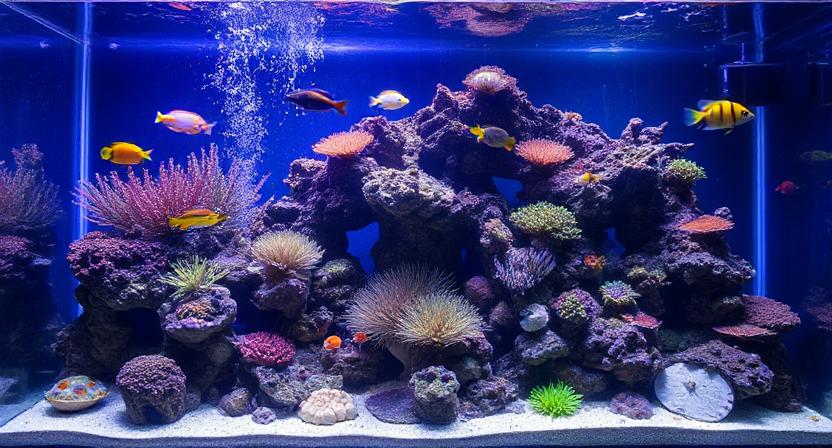If you’re reading this you’re likely a fish lover or aquarium keeper. Upon first sight, it may seem that fish behavior is not important or non existent, this is simply untrue. Fish have a very different way of communicating and experiencing the world, because of this it is sometimes confusing or odd the way that they act. Fish behavior is wildly important and if we can observe and interpret our aquatic friends behaviors then we can draw important conclusions about the health of them and their tank. Once we do this we are able to more effectively care for our fish and maintain a healthy and happy environment for them. In this post, we’ll dive into common fish behavior, what the mean, and how we can apply this in our care.
Why Fish Behavior Matters
A fish’s behavior can reflect it’s mood, health, social status, and environment. If we understand what our fish is telling us by the way it acts we can help them by:
-
Learning to identify stress or illness early
-
Improving fish compatibility in social community tanks
-
Enhancing your understanding of fish and aquarium keeping
-
Creating an enriching habitat specialized for your fish

Common Fish Behaviors and What They Mean
1. Schooling and Shoaling
This refers to fish swimming together in a group. They will do this for a number of social reasons that include information sharing and protection. This makes it easier for them to find food, avoid predators and reduce stress. In the wild this is essential for many species survival, foraging, and reproduction.
Some species naturally school and indicates a safe and comfortable environment for the fish. On the other hand if schooling fish are swimming alone, we may be able to conclude that something is wrong and they are possibly stressed or unwell.

2. Aggression or Chasing
This is typically a sign that your fish has territorial behavior, is mating, or stressed due to overcrowding in the tank. Chasing and nipping can also be more common in some species. Be sure to research the temperament of your fish before introducing them to a tank with others to ensure they’re compatible. If your fish are exhibiting this behavior you may consider switching some element of their aquarium environment or who their tank mates are.
3. Bottom Sitting or Hiding
Sitting at the bottom of the tank or hiding may be perfectly normal but it can also be a red flag for a major issue. Some species prefer to do this so be sure to research your specific fish’s behavior patterns before drawing conclusions. Other fish where this is not their typical behavior, may occasionally rest at the bottom of the tank. Persistent hiding or sitting at the bottom of the tank may indicate that a fish is unwell or having a social issue with others in the tank. You should observe and monitor their behavior to understand why they are acting in the way thy are.

4. Erratic Swimming or Darting
When a fish swims quicker than normal or in an erratic fashion, this can be an indication that the fish is fearful or water conditions are poor in your tank. Make sure to keep track of and constantly check your tank’ levels of pH, ammonia, nitrite, and nitrate levels if you notice this. If the levels are all constantly within normal range consider what your fish may be fearful of. Fish may be fearful of other fish in the tank or some other feature of the aquarium.
5. Gasping at the Surface
Fish need oxygen just like the rest of us animals to survive. Typically they get this through the water by using their gills although if they can’t get enough from this source they will gasp for oxygen from the air at the top of the tank. So gasping is likely a sign of low oxygen levels in the tank. Aeration with air stones, surface agitation, or by adjusting your filter output.

Understanding Fish Body Language
Being able to determine what your fish’s body language means can help you to better understand their health and wellbeing status. Fish may exhibit different colors, fin appearances, and gill movements depending on how they feel. Here are some common meanings of these.
-
Color: You may observe color changes in your fish. Bright, vivid colors usually mean a fish is healthy and comfortable in their environment. When fish exhibit faded colors this may be a concern as it can indicate stress.
-
Fin Clamping: Fish sometimes will hold their fins tightly against their body when they are ill or uncomfortable. If you notice this you should carefully observe your fish for other issues or signs of distress.
-
Gill Movement: Gill movement is normal but rapid gill movement is not. If a fish is having. rapid gill movements this could be a sign of ammonia poisoning, parasites, or oxygen deficiency.

Tips for Observing Fish Behavior
-
Watch your fish daily and observe their patterns and behaviors. This will help you to establish what their normal is and be aware when something is not right in the tank.
-
You can even keep a notebook or log of how your fish acts which will help you to remember what you notice. A log can include appearance, activity, patterns, etc. a log of changes in activity or appearance
-
When you get a new fish make sure to quarantine them before introducing them to your tank. This will decrease the likelihood of spreading disease to other aquarium inhabitants. If you find that one of your fish does unfortunately get sick, they should also be quarantined.
-
Don’t forget to regularly test your water for correct levels of chemicals, temperature, etc. so that your fish can thrive. Your fish have a much better chance at exhibiting normal behaviors if their environment is a healthy one.

Final Thoughts
Understanding fish behavior is absolutely essential for aquarium care. Without understanding how your aquarium resident act, it’s impossible to know how they are feeling. iAs an added pro, its also fascinating to understand fish behavior. They are so different and unique to the animal world. So be responsible and observe to learn more. Once you do this you can provide a safe and stimulating environment for your fish. Whether it’s subtle color changes or chasing and aggression, every fish behavior tells a story.


